Floating Stairs Design (20 Styles, Materials & Ideas)
Floating stairs are designed to appear “floating” by appearing not to have any structural support or a solid foundation. There are several ways to build a floating staircase, and it all depends on the existing structure of your house.
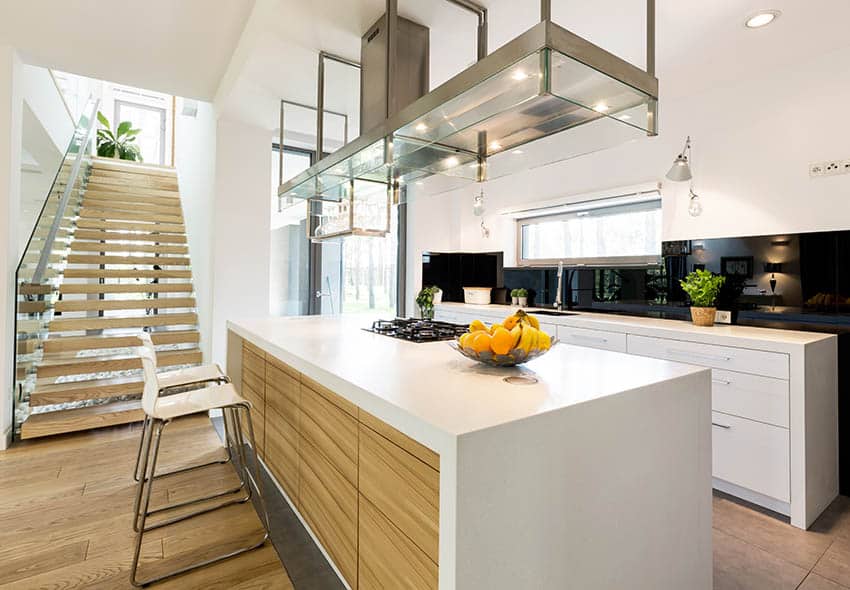
Floating stairs provide a modern and sleek look that can act as a focal point in a room, giving the space a unique feel. Let’s take a closer look at how they work.
How Do Floating Stairs Work?
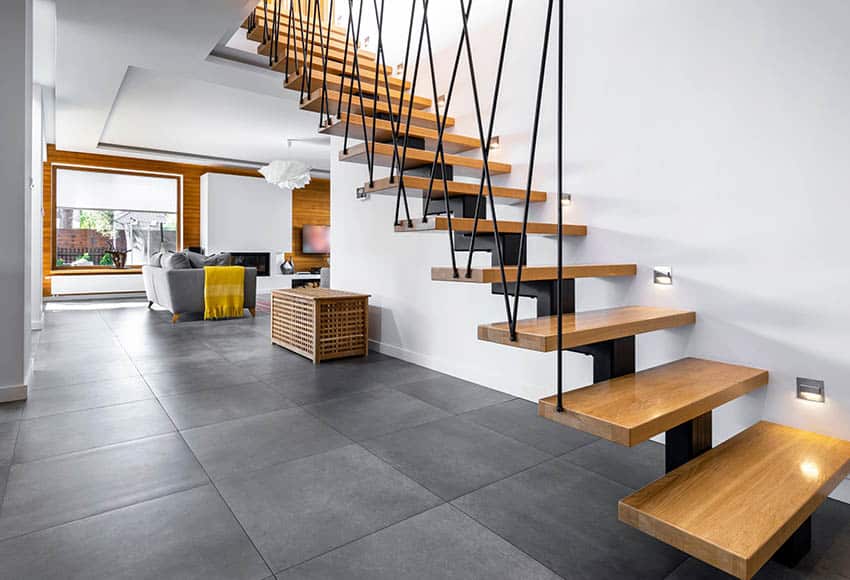
In most types of floating staircases, a load-bearing or structural wall is important, as it will provide support for the stairs. Cantilever floating stairs, the most popular style, tend to rely heavily on the structural stability of the wall, as it does not have any additional supports underneath to create a clean, modern look.
However, design alternatives can still be used to achieve this in the case of a non-load-bearing wall. The overall supporting structure of stairs will entirely depend on the wall structure, and the engineering of your stairs will be designed accordingly. If you’re worried about the stability of floating staircases or your wall doesn’t provide enough support, you can also explore using central-spine staircases.
These stairs also have a floating look, but they have an additional central spine (usually steel, wood, or concrete) to support their load, so you don’t have to worry about your wall.
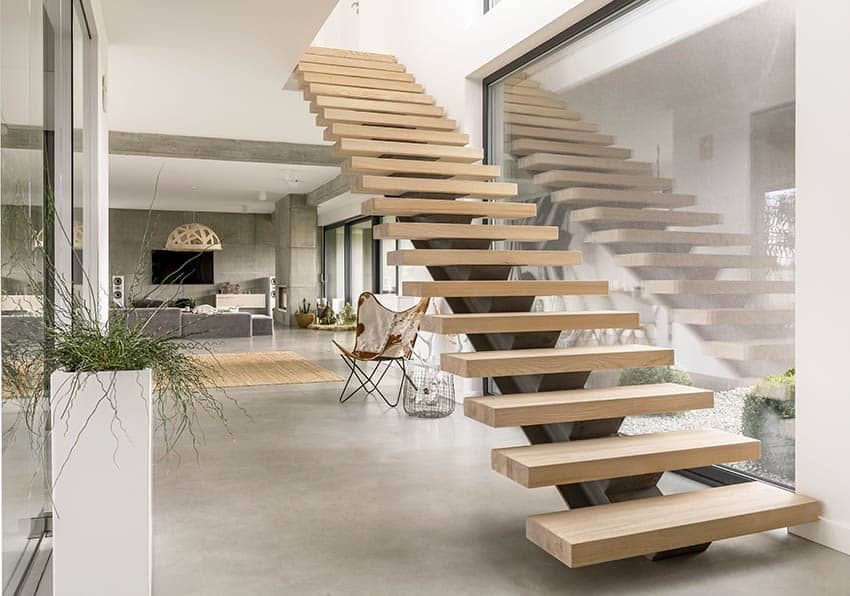
The modern house shown in the picture above uses a floating stairs design with a metal central spine. Its minimalist interior has a gorgeous wooden quasi-floating staircase that is slightly offset from the wall. The small gap further emphasizes its “floating” look and keeps the walls free from damage. One great advantage of quasi-floating stairs is that they do not damage the walls, as the stair support is attached to the floor and the ceiling slab.
There are many material options for installing floating stairs in your home. But always consider safety first. If you have small children or pets, free-floating stairs are definitely not a safe option, as they usually don’t have railings. Choose a design that prioritizes the safety of the users and the safety of the structure, and it will surely be worth it.
Cantilever Stairs
Free-floating stairs, also known as cantilever stairs, usually have a very slim and minimalist look. They usually require a load-bearing wall for support, and the design of the support will determine the maximum stair width.
Ideally, free-floating staircase design (also known as cantilever stairs) should not be too wide to ensure stability, especially when using wood or other materials that easily bend.
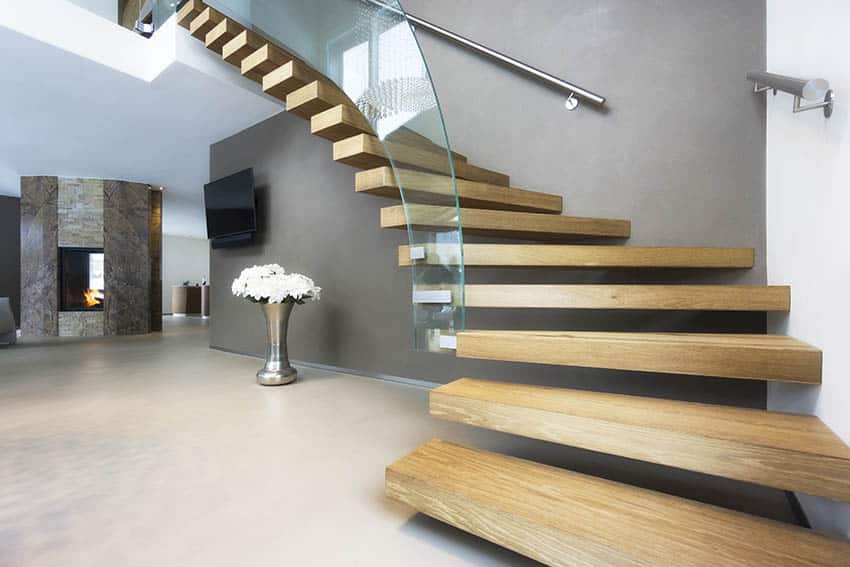
For added safety and to enhance the modern look, the floating stairs design above uses tempered glass stair railings with stainless steel handrails.
Floating Wood Stairs
There are a couple of ways to install floating wood stairs. The most popular is the cantilever wood stairs. You can also use a quasi-floating staircase (or central spine) with wooden treads. Always ensure you’re using the right type of wood because not all wood species are made equal, and some are easier to warp and bend than others. Choose the appropriate type of wood depending on the support structure of your stairs.
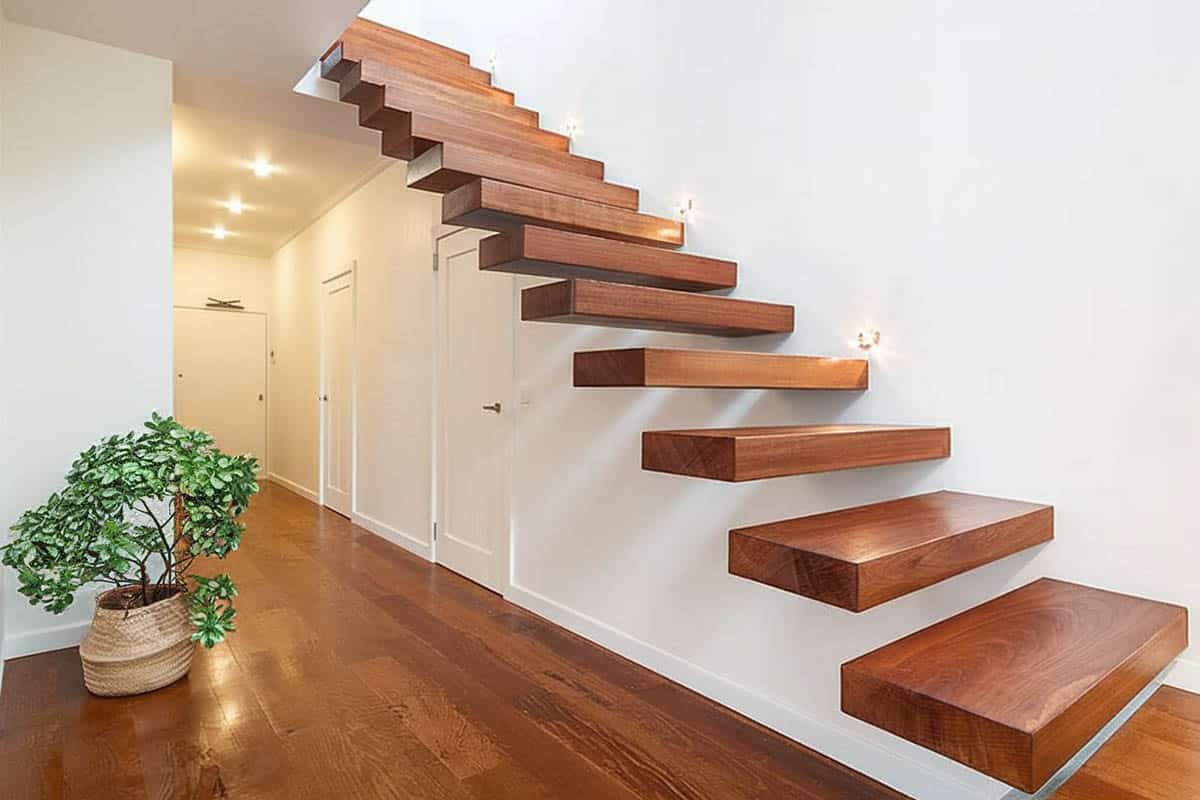
This is your classic minimalist cantilever stairs with wooden steps. The support structure is concealed inside the wall, and the wooden steps ensure stability. As you can notice, the wooden treads are very thick, which enables them to support more weight and avoid bending and warping. Consider using thinner wood treads for your floating stairs for a more lightweight look. Just make sure that you also use wider metal stiffeners underneath the treads so the wood doesn’t break or bend.
Floating Metal Stairs
Recently, there have been many creative techniques to use metal for stairs. Traditionally, they’re only used for structural support or railings. However, recently, you’ll also find metal treads made from metal sheets, metal frames, and many other creative applications.
A metal column is used to support the structure of these spiral staircases. The stair treads are made from wood painted in black stain, and the handrails, bolted to the floors, walls, and ceiling, provide additional stability to the steps.
Black stairs are very in vogue right now, and because black is a very versatile color, you can easily use it for your stairs without any worries that it will not match the current look of your space.
Floating Concrete Stairs
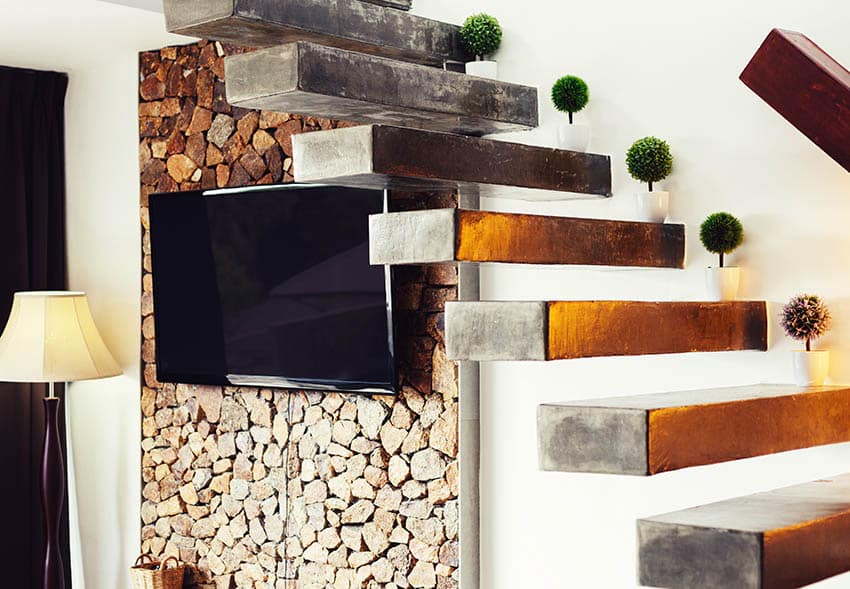
Concrete floating stairway designs are popular in modern homes. They give a raw look and feel, are very durable, and can take a higher load than most other materials. Aside from the look & durability, concrete steps are also popular because of their lower cost. You can easily repaint, refinish, or leave it as is.
Modern Floating Style Stairs
The modern era brought about a new selection of technology and materials into construction. Hence, new ways to build stairs were developed. Modern floating stairs often combine a number of construction materials and techniques to achieve a certain design or look.
This modern stairway style has a clean, smooth look with concrete stair treads and frameless glass railings. A central metal spine supports the steps, while the glass railings are bolted on the side edges of the concrete steps. See more modern living room designs here.
Suspended Stairs with Glass Railing
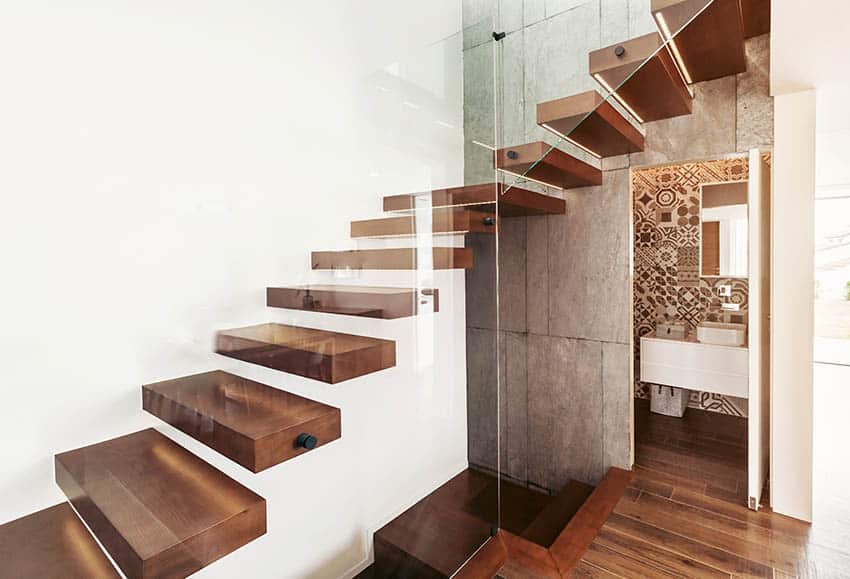
Adding glass railing enhances the modern look of your floating stairway, but it can also help add stability and make it safer if you have kids or pets at home. Using frameless clear glass, you can retain that floating look without obstructing the illusion. Additionally, you can use glass that connects from the floor to the ceiling slab to help add stability to your floating staircase.
DIY Floating Staircase
While a DIY staircase is completely possible, it is recommended that you have prior knowledge & experience in building/construction, as it requires a lot of technical know-how.
If you’re confident with your skills, however, just take note of the following important points:
- Check the building code – make sure you take note of the minimum and maximum measurements and load requirements to ensure the safety and functionality of the steps you are building.
- Asses support structures – are you building off a concrete wall? Drywall? Or is there no wall beside your staircase? These are all factors that will narrow down your choices for floating stairway supports and style.
- Determine the users of the stairway – if you have small children, pets, and elderly who will also use the staircase, ensure that the stairway you are building will be safe for them. Add railings for extra support, and if your kids or small pets like to run around a lot, perhaps a stair riser will also need to be added to avoid accidents.
- Choose the right material – all the above-mentioned factors will also help you narrow down the material choices for the staircase. Make sure you select appropriate materials and support hardware.
Floating Outdoor Stairs
It is also possible to add a cantilevered staircase feature to your yard, garden, or front porch! There are a number of ways to build one and a couple of materials to choose from, but the most popular is, of course, concrete.
You can add terrazzo or texture to make it safer for outdoor use, but concrete by itself is an easy, low-maintenance choice for outdoor use.
Central spine supports are typically used for floating deck staircases. The chair step materials are usually matched to the material used on the deck itself, so if you’re using wood decking, it would be recommended that you use the same for your stair treads for a seamless look.
These gorgeous outdoor staircase made from concrete treads cantilevered on the walls. Metal framing/hardware is concealed inside the steps to add stability, and because these are concrete, this is a durable outdoor-grade material that can withstand any weather.
Is the Suspended Stairs Design Expensive?
It might be surprising to hear, but a cantilevered staircase can go anywhere between $3,000 to $100,000. The cost will be determined by a lot of factors, and as mentioned earlier, a lot of engineering and building knowledge is required to build one successfully. These types of stairs are highly customizable, so the cost will entirely depend on what you have (structurally) and what you want.
Floating Staircase Design Ideas
Below are great examples of floating stairs for your inspiration:
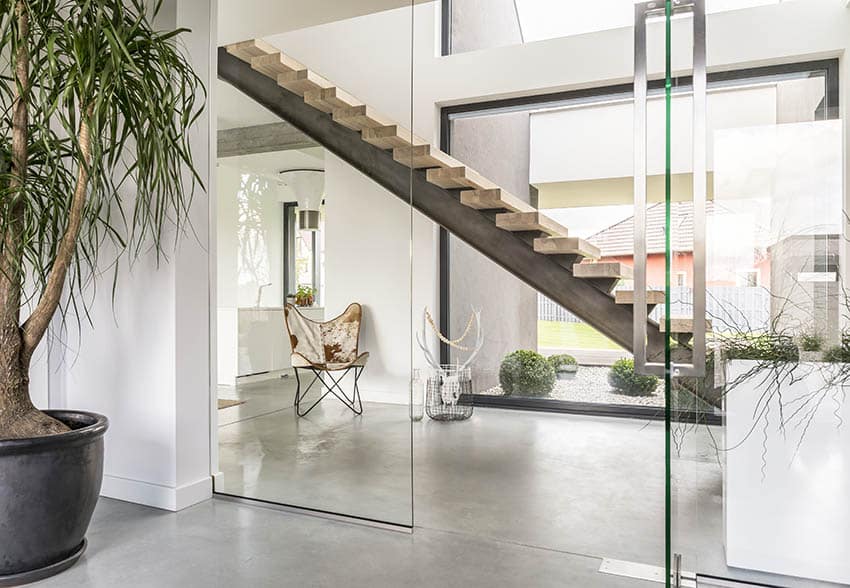
This industrial-style staircase combines metal framing and railings painted black with salvaged wood steps to give it a natural, raw look. Because the condition of reclaimed wood may vary, additional metal plate supports were screwed underneath the wooden treads to ensure stability. One great advantage of a cantilevered staircase is that it does not damage the walls, as the stair support is attached to the floor and the ceiling slab.
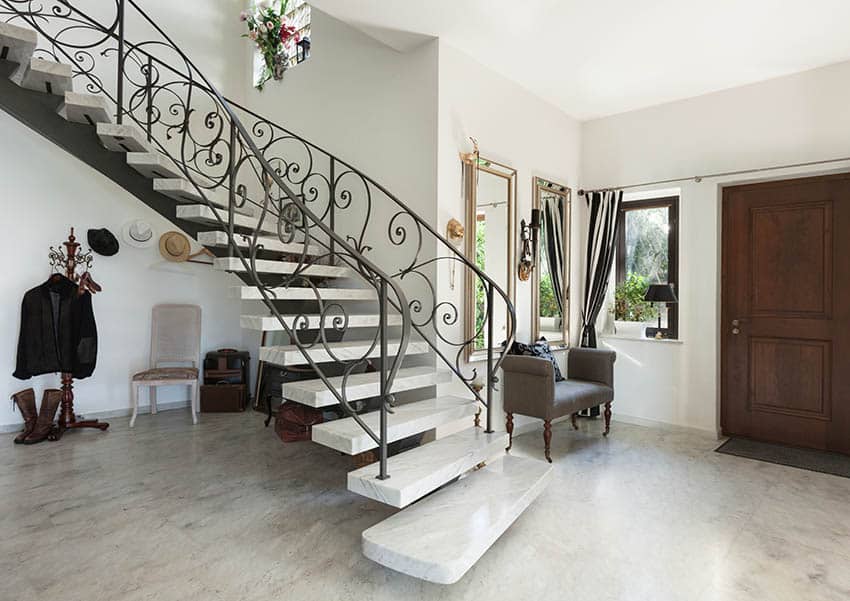
This gorgeous spiral staircase is made from metal frames and railings, with marble steps. The metal framing and wrought iron hand railings provide enough support, so you can be at ease that the staircase will provide the necessary strength and durability you need for long-term use.
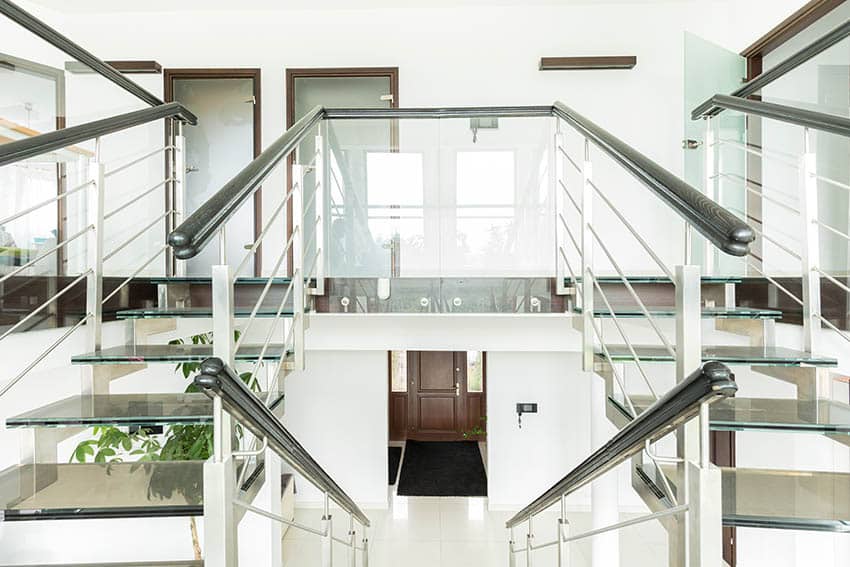
Since neither side of these glass staircases had a wall beside them, two railings were installed to ensure safety. The metal railings are in stainless steel so that they blend in and help reinforce the modern design.
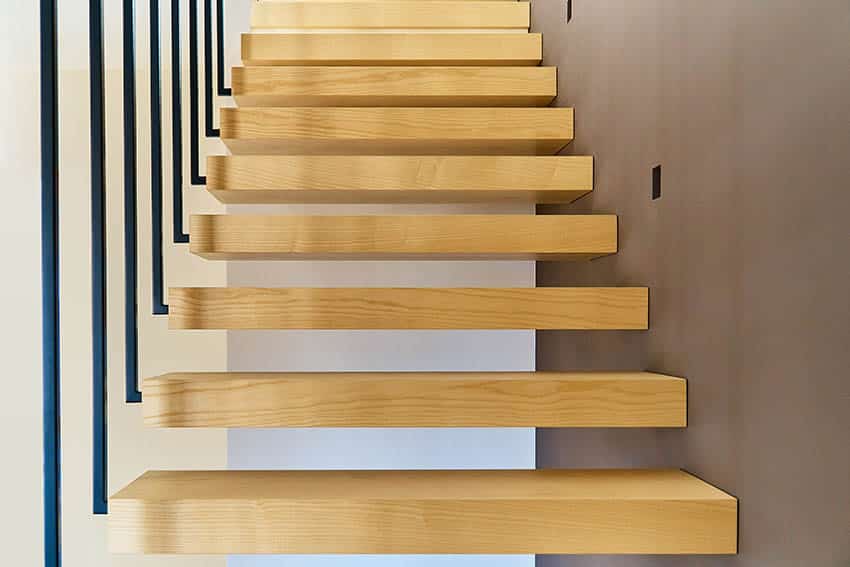
A great example of industrial style is this modern cantilevered staircase. These steps connect to the basement; hence, the solid walls can help support the load of the staircase. Since the wooden steps used in this design are thicker, vertical metal poles attached to the beams and connecting to the end of the stair treads help add stability and load support to the steps.
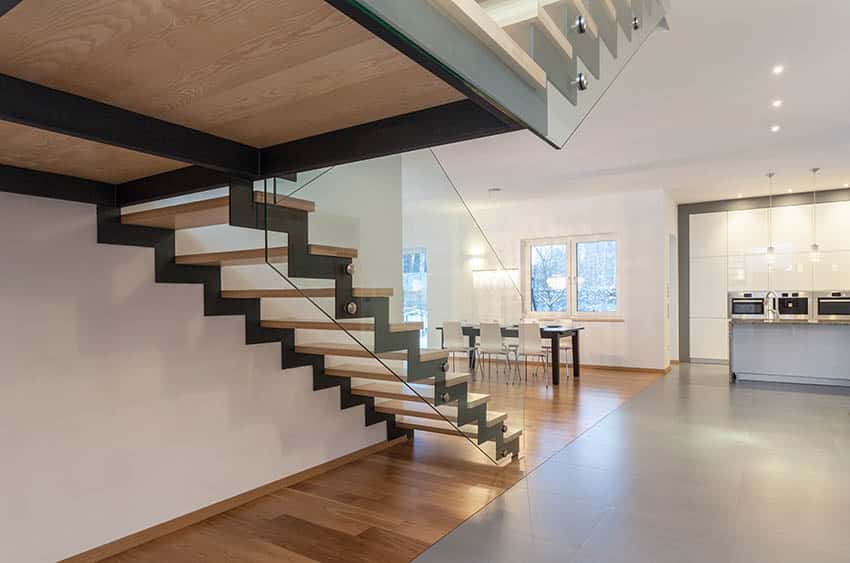
Another way to construct a cantilevered staircase is to use support braces on its sides, leaving its center open. This example uses solid wood steps with metal braces on both sides of the stairs. Tempered glass side railings were also added for extra safety and to complement the modern look of the open-concept kitchen design.
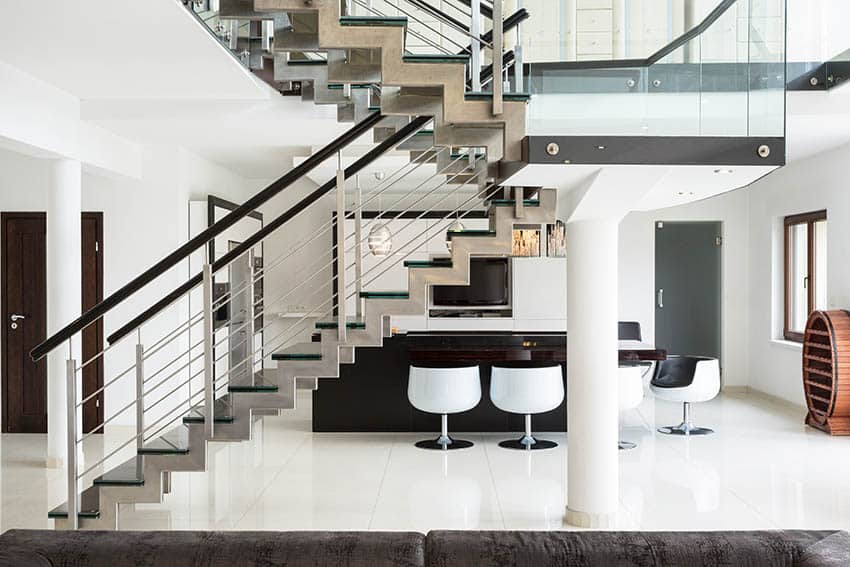
These modern cantilevered staircases have a very unique design. It features a one-piece metal frame that is in the shape of the stair riser and treads, but because the metal has a slimmer profile, even with the presence of a riser, it still looks like it is “floating”.
Glass treads were added to the steps to enhance visuals, while metal tension wires were installed horizontally up to the 2nd-floor ceiling to serve as the side railings with black handrails, creating a very unique design.
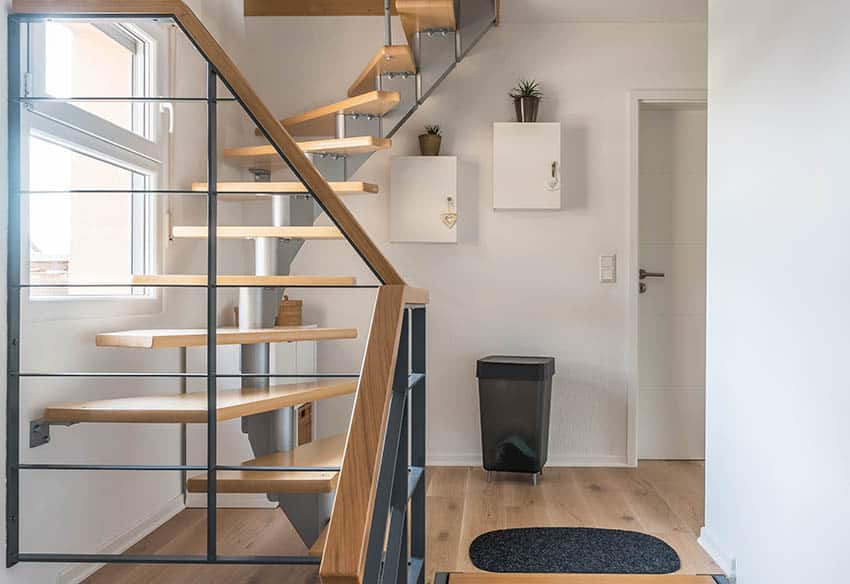
The cantilevered staircase can also be applied to spiral staircases. It takes a little more skills and expertise to achieve this, but it is completely doable. In this example, the floating spiral staircase is made from wood and also has railings with decorative metal designs on the sides.
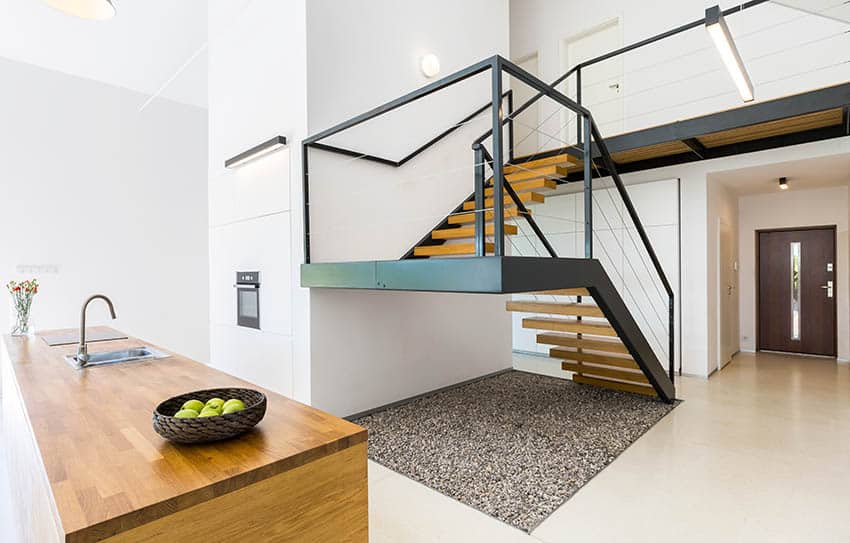
For this contemporary staircase, a combination of wood and metal supports was used to construct the railings and steps. Wooden floating frames support the treads, while metal columns provide the overall structural support and double as railing support.
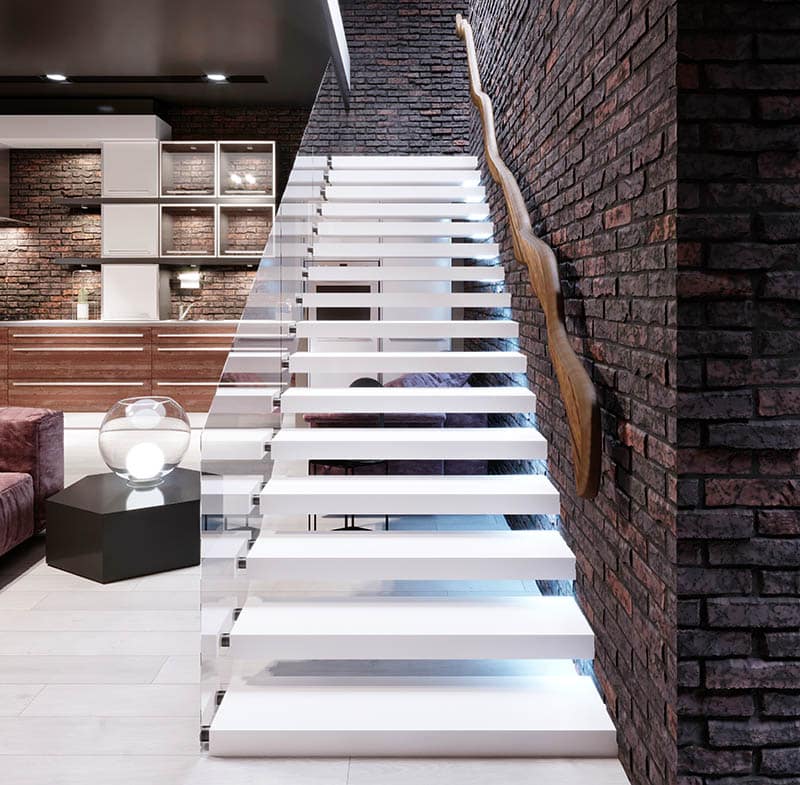
The concrete stair treads used here are very thick, so the metal stiffeners/stabilizers are inside the treads, concealing them from sight for a cleaner look. Glass railings were also added as these steps span multiple floors throughout the home.
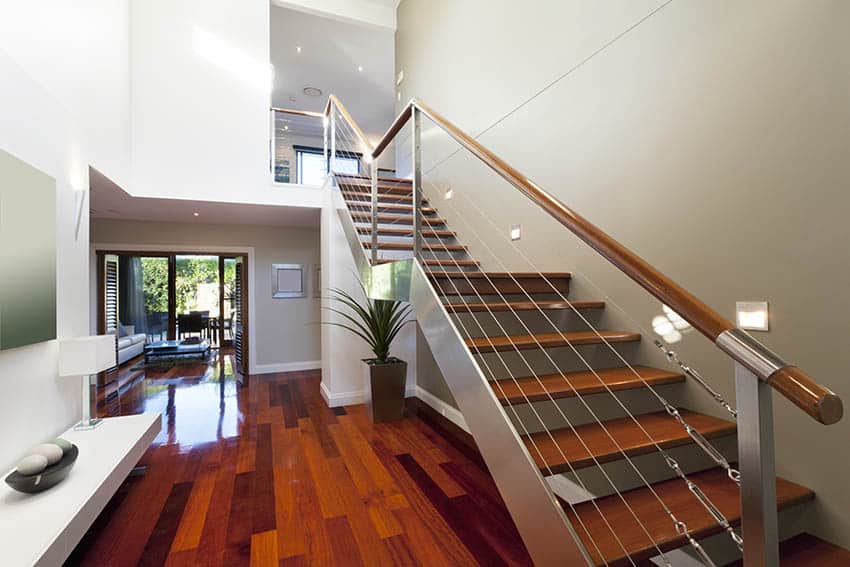
This is a beautiful example of a rustic modern staircase that uses brushed stainless steel support and cherry wood treads for its design. The medium grain finish of the wood and the metal features & railings add a nice contrast against the light-colored walls, artwork, and decor materials.
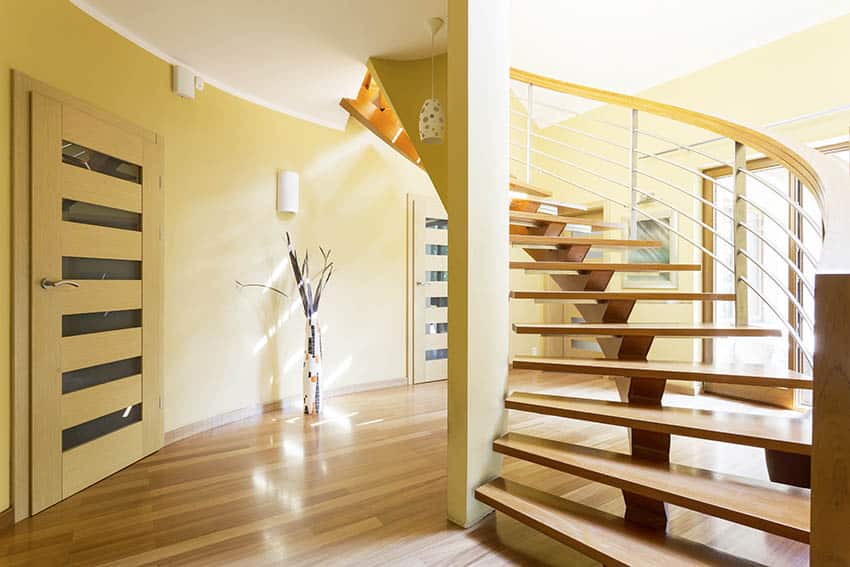
The cantilevered staircase can also be applied when you have spiral or U-shaped steps. This modern rustic staircase uses a metal central spine for the wooden treads to ensure it doesn’t bend and warp. It also provides stainless steel metal railings with additional horizontal and vertical support that is welded into the tread supports, adding stability.
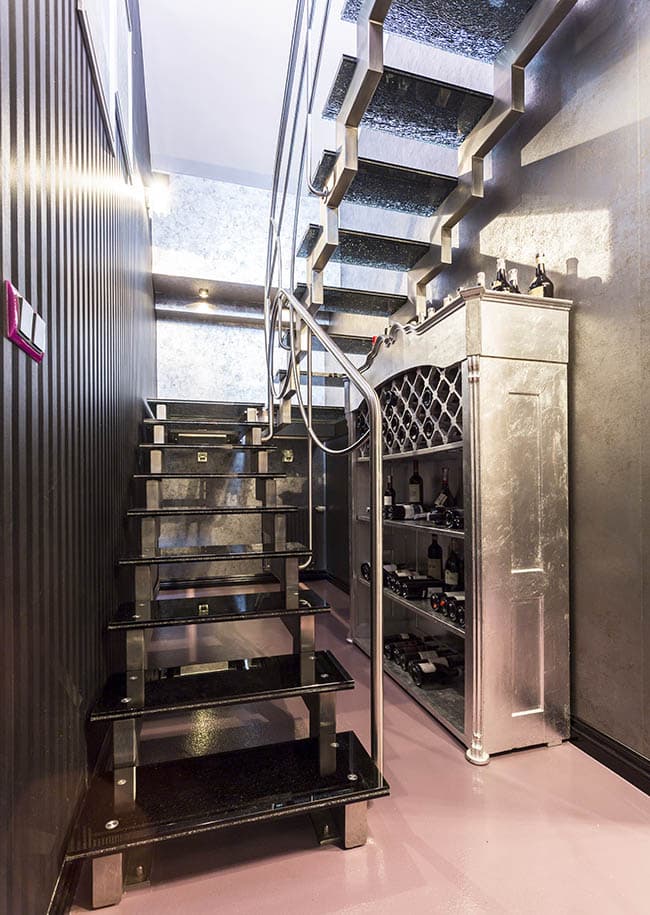
This cantilevered staircase has unique solid steel railings and tempered glass with steps finished in a black powder coat, making them seamlessly blend with the walls. At certain angles & lighting conditions, it may even look like the railings are not there at all, so this is a great option if you really need railings.
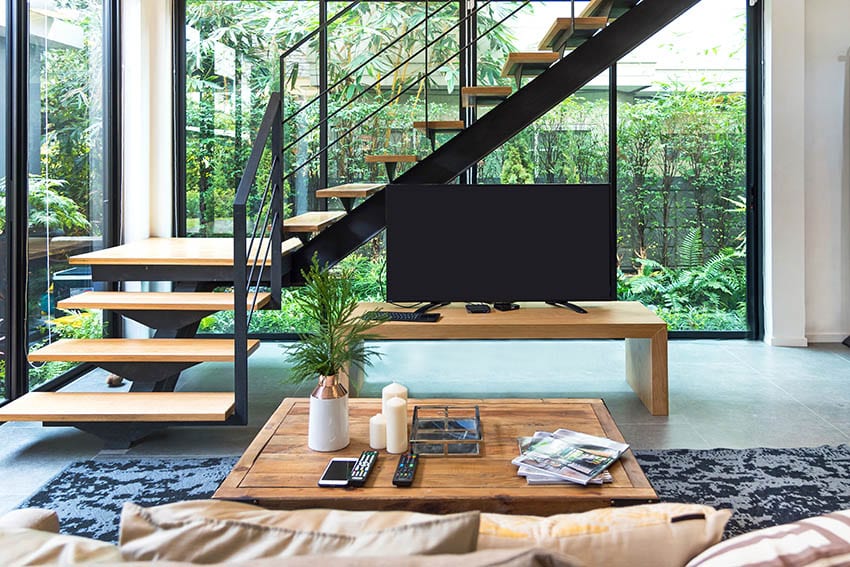
Light beechwood veneers give these wooden steps a modern Scandinavian vibe that perfectly complements the furniture pieces and architectural features of the space. A metal central spine supports these thick wooden treads, and metal stiffeners are also attached underneath the wooden treads to help avoid warping. Black powder-coated steel handrails were also installed, helping add safety while maintaining a clean aesthetic.
For more related designs, check out our gallery of under stairs ideas.

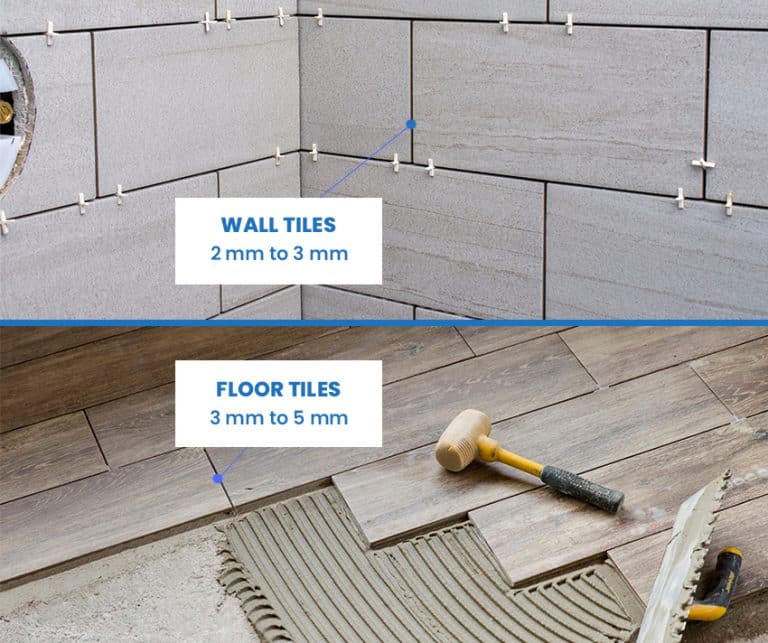
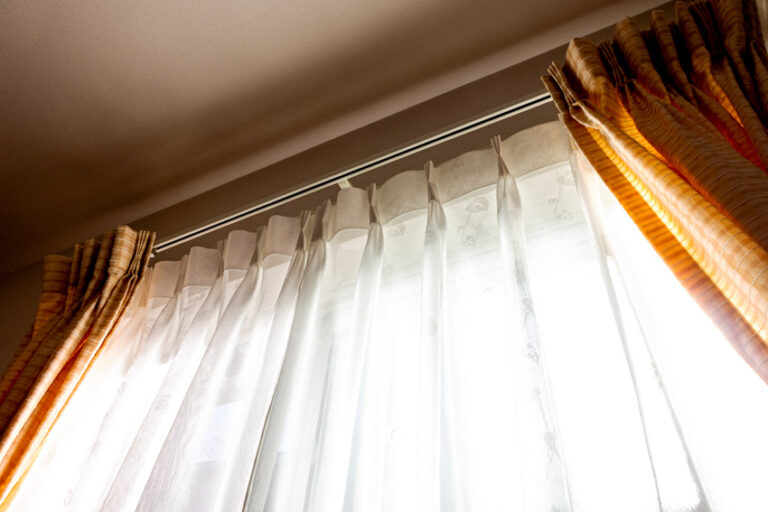
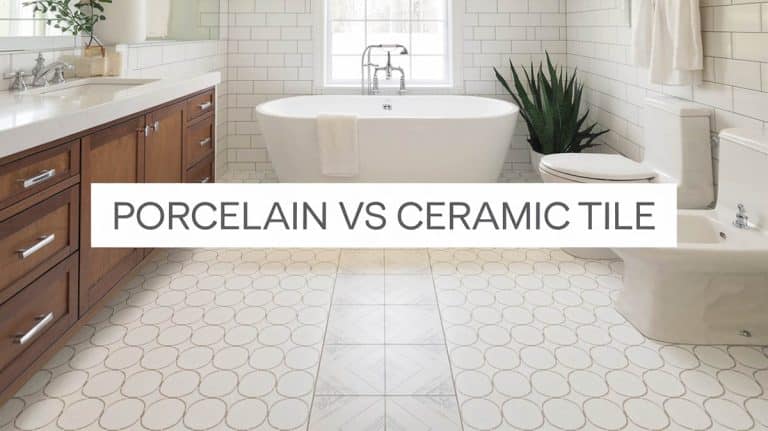
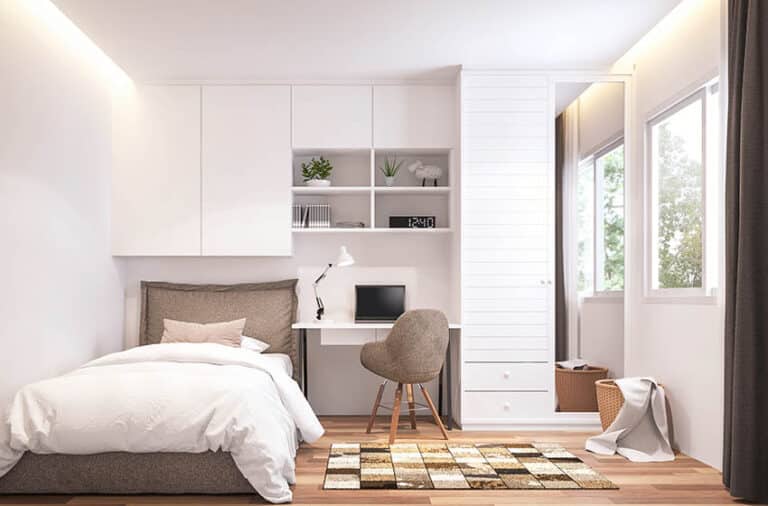
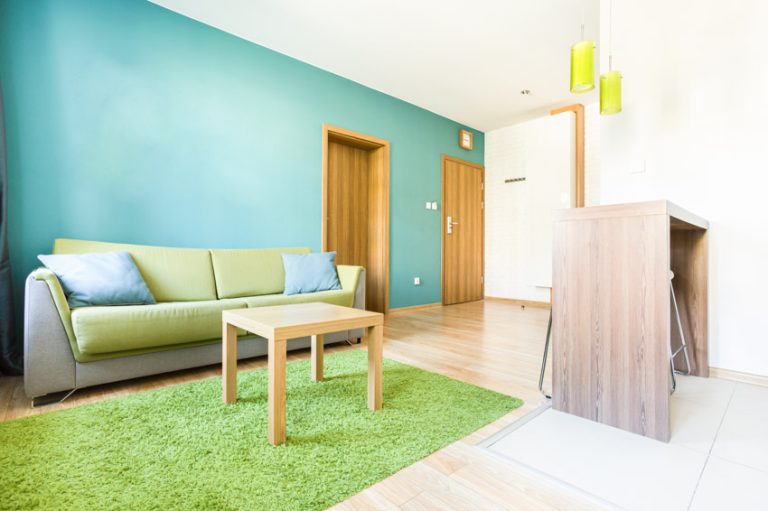
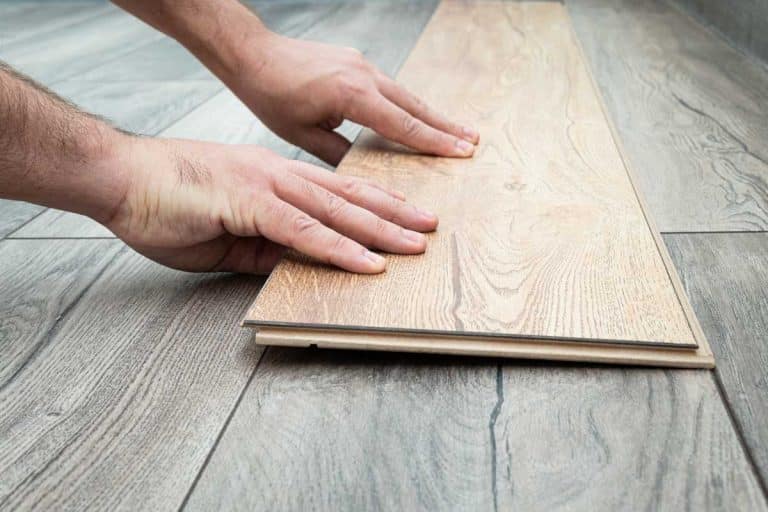
Looking to build a two story living space inside a corner of a large metal building. The stairs will be a key feature.